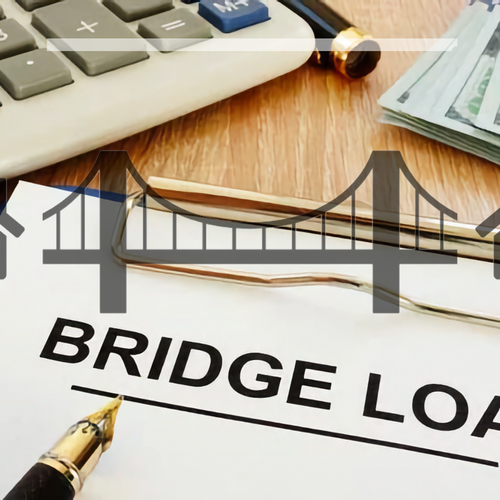When you’re venturing into the real estate market in California – be it as a buyer, seller, or a new real estate agent, it is essential to learn about the intricacies of the inspection contingency, a vital element of the property purchase agreement. The inspection contingency is a provision that allows buyers to conduct a thorough investigation of the property before finalizing the purchase to make sure they are satisfied with all physical aspects of the property. This article takes a deep dive and explores the crucial information you know about the inspection contingency in Bay Area home purchases.
NOTE: This article provides a basic understanding of the inspection contingency in California’s real estate market. Real estate transactions can vary due to numerous factors, and parts of this article might not apply to your specific situation. Always seek professional legal or real estate advice.
Why is an Inspection Contingency Important?
The importance of the inspection contingency cannot be overstated. It gives prospective buyers the leverage to back out of the deal, negotiate repairs, or request a lower purchase price based on the inspector’s findings, without risking their earnest money deposit. It’s essentially a safety net for the buyer, ensuring the transaction is transparent, fair, and based on informed decisions.
What is an Inspection Contingency?
An inspection contingency is a clause inserted into the real estate contract, making the purchase offer subject to the outcomes of a professional property inspection, or series of inspections. This provision provides the buyer with a specified period, which is 17 days by default per the standard California Residential Purchase Agreement (RPA), to complete an exhaustive evaluation of the property, scrutinizing all aspects from physical attributes to neighborhood characteristics.
The inspection contingency is designed to protect the buyer’s interests, offering a contractual excuse to cancel the contract and have the buyer’s earnest money deposit returned if the property’s condition or any other influencing factor is found unsatisfactory during the contingency period. The nitty gritty of the inspection contingency is spelled out in Paragraph 12 of the RPA:

RPA Paragraph 12
How Long is an Inspection Contingency Period?
As mentioned above, by default, the inspection contingency period is 17 days per the RPA. However, most sellers in the greater Bay Area do the pre-sale inspections and make those reports and other disclosures available to the buyer before the buyer makes their offer. The seller does this to cut down or perhaps entirely eliminate the buyer’s inspection contingency period. If the buyer is able to negotiate at least some time for this inspection contingency, it is typically only 7-10 days.

RPA Paragraph 14B(1)
Extending the Inspection Contingency Period
It is not uncommon for a buyer in the Bay Area to feel the need to extend the inspection contingency period, especially when they have an abbreviated time to do those inspections. It is also common that the seller will grant at least one inspection contingency period extension, so long as the buyer has been working in good faith to complete their inspections in a timely fashion and can show that there is good reason for an extension. A good reason might be that, say, a home inspection revealed there might be a mold issue, and several more days will be needed for a mold inspection.

RPA Paragraph 14B(4)
Releasing the Inspection Contingency
The inspection contingency remains in place until it is removed in writing. Many buyers fear that after the agreed-upon time period has elapsed that the inspection contingency simply goes away – fortunately for buyers, that is not the case. Buyers will need to sign and send the seller a Contingency Removal Form which explicitly states that they have removed this contingency. If the buyer fails to remove the inspection contingency within the time allotted, the seller can issue a Notice to Buyer to Perform, which will allow the seller to unilaterally cancel the contract if the buyer does not release the contingency within two (or more) days.
Components of an Inspection Contingency
An inspection contingency covers a vast range of issues. It includes:
-
Structural Inspections: Assessment of physical attributes such as the foundation, roof, walls, chimney, and other structural components.
-
System Inspections: Evaluation of the electrical system, HVAC, plumbing, sewer lateral, septic system, well, and major appliances.
-
Environmental Inspections: Analysis for potential environmental hazards like lead-based paint, asbestos, or mold.
-
Neighborhood Inspections: Examination of the neighborhood, crime statistics, proximity to shopping centers, restaurants, school districts, bike paths, and more.
- Title Inspection: HOA documentation, CC&Rs, easements, rights-of-way, water rights, and anything else in the title report
- Insurability: The buyer needs to use the inspection contingency period to make sure property insurance is available
The Buyer’s Investigation Advisory
The California RPA is typically delivered as a package of documents including several advisories for buyers and sellers. One of these advisories is the Buyer’s Investigation Advisory (CAR Form BIA). The BIA contains a laundry list of many of the particulars of any property that buyers should consider inspecting. By default, this document is included in the standard set of advisories with the California RPA – so as a buyer, you will almost certainly be signing it when you submit your offer, so it’s a good idea to read it ahead of time. You can download a copy of of the CAR BIA Form here.
What Buyers Cannot Inspect
It’s important to note that the inspection contingency does not allow for destructive inspections. Despite what you may have seen on reality TV shows likes Holmes Inspection, the California Residential Purchase Agreement allows only for visual physical inspection of the property. Paragraph 12 of the RPA, included above, specifies that:
Buyer shall neither make nor cause to be made: (i) invasive or destructive Buyer Investigations, except for minimally invasive testing required to prepare a Pest Control Report, which shall not include any holes or drilling through stucco or similar material
The buyer is also prohibited from ordering any inspections of the property by government officials (e.g. building inspectors) unless required by law.
Seller’s Duties for Buyer’s Inspections
The seller is obligated to cooperate with the buyer’s inspections, allowing reasonable access to the property. The seller must ensure that all utilities are functioning for the buyer’s inspections so all the systems of the home can be adequately tested. The seller is not required to move any boxes, furniture, carpeting, or other stored items to facilitate the inspections.
How Does the Inspection Contingency Work?
When an offer is made, and the inspection contingency is activated, the buyer hires qualified inspectors to carry out a detailed examination of the property. If any issues are found, the buyer may then negotiate for repairs or request a monetary credit at closing. The seller, however, has no obligation to respond to the requests.
The buyer and the seller may engage in a back-and-forth negotiation over the extent of repairs, credits, or price adjustments. If an agreement is reached, certain forms such as the Contingency Removal form (C.A.R. Form CR) or the Request for Repair (C.A.R. Form RR) may be used to document the agreed terms.
It’s important to remember that the California RPA is an as-is purchase agreement. The buyer’s offer, unless specific repairs (e.g. termite or septic system clearance) are specified, states that the seller will not have to make any repairs, or issue any credits or price reductions for those repairs the buyer feels they need. If the buyer is not satisfied with the condition of the property after doing their inspections, they can walk away and get their deposit back. However, knowing this, the seller may be open to making some kind of concessions to the buyer at this point, especially if the buyer has discovered legitimate condition issues that neither buyer nor seller were aware of at the time the buyer made the offer.
Best Practices for Buyers
For buyers, it’s crucial not to wait until the final day of the contingency period to conduct investigations or request repairs. Actually, it’s important that you line up inspections within a day of getting an offer accepted – if not before. It’s also recommended that buyers:
-
Research home inspectors before writing an offer.
-
Review the completed inspection report with the inspectors.
- Make sure you can get homeowner’s insurance on the property before releasing any inspection contingency
-
Discuss with their agent the consequences of removing contingencies, attempting negotiations, and cancellation.
Pros and Cons of Inspection Contingency
Though the inspection contingency is designed to protect the buyer, it does come with certain pros and cons.
Pros:
-
It protects your deposit and gives you more flexibility.
-
It allows you to negotiate for repairs or a price reduction based on the inspection results.
Cons:
-
It could make your offer less attractive to the seller.
-
It can make the transaction more complicated, which might work against you in a competitive market.
Waiving the Inspection Contingency
In a highly competitive market, buyers may decide to waive all contingencies, including the inspection contingency, to make their offer more attractive. However, waiving this contingency means the buyer accepts to purchase the property as-is, and any subsequent discovery of issues with the property will be the buyer’s responsibility.
Conclusion
In conclusion, the inspection contingency is a vital part of California’s real estate transactions. It offers a safety net for buyers, ensuring they have ample opportunity to discover potential problems with the property before finalizing the purchase. For sellers, it provides an opportunity to address any issues upfront, potentially avoiding future disputes. By promoting transparency and fairness, the inspection contingency contributes to smoother and more successful real estate transactions.
Terrific Sunnyvale Homes for Sale
2
3
4
5
6
7
8
9
10
11
12
13
14
15
16
17
18
19
20
21
22
23
24
25




